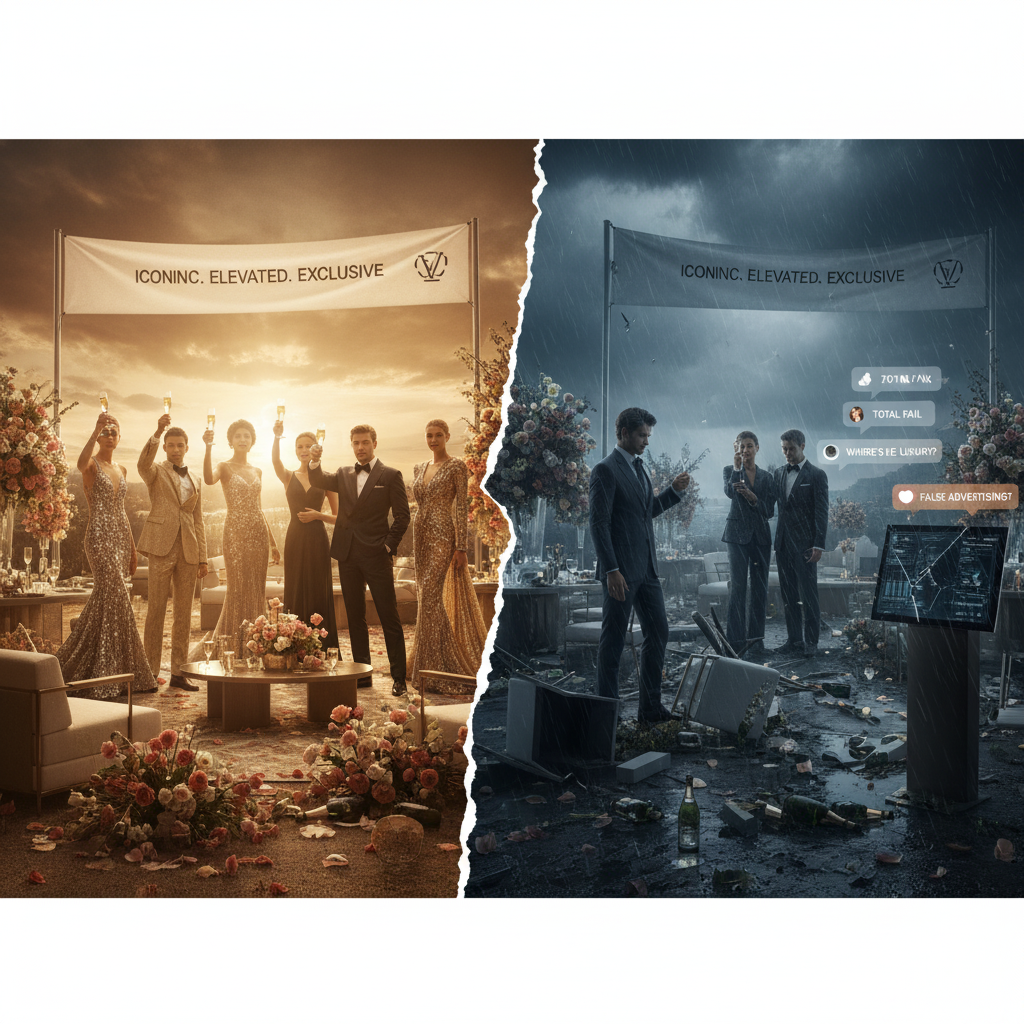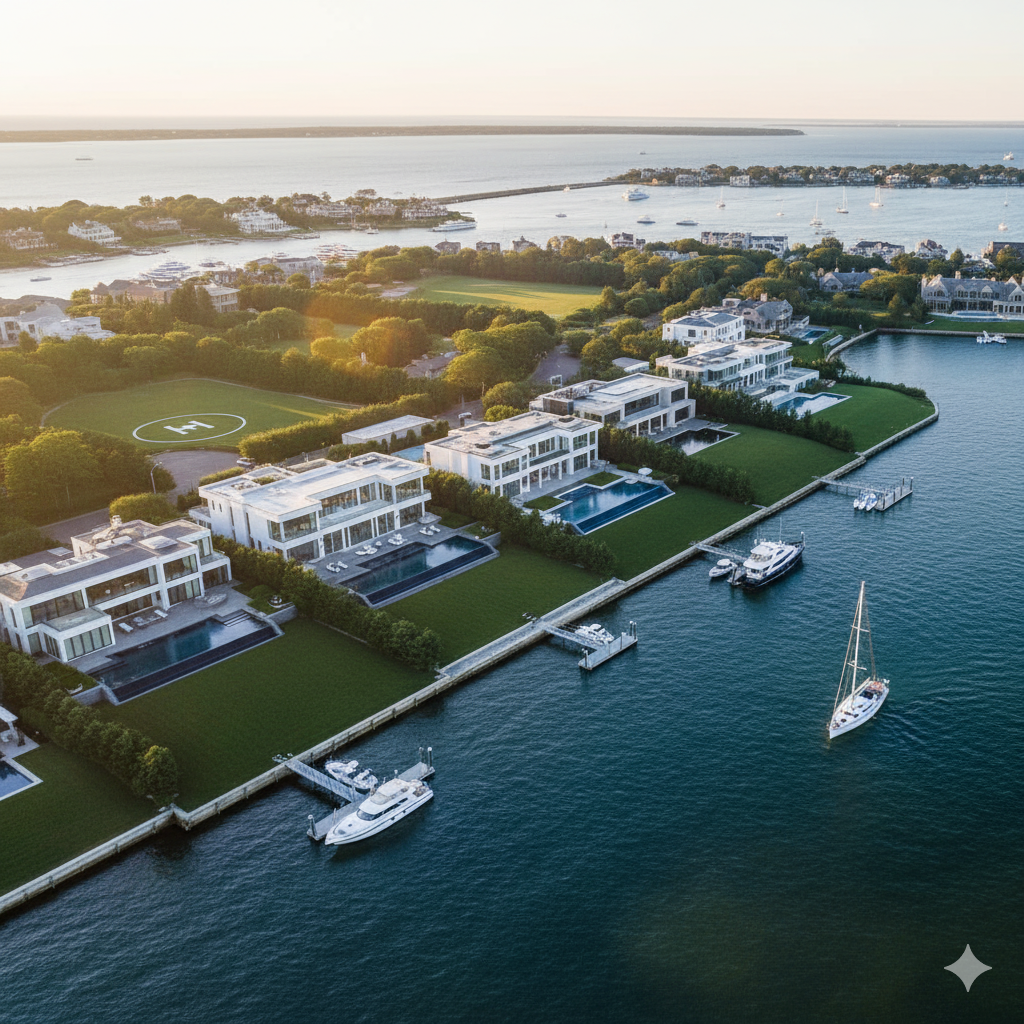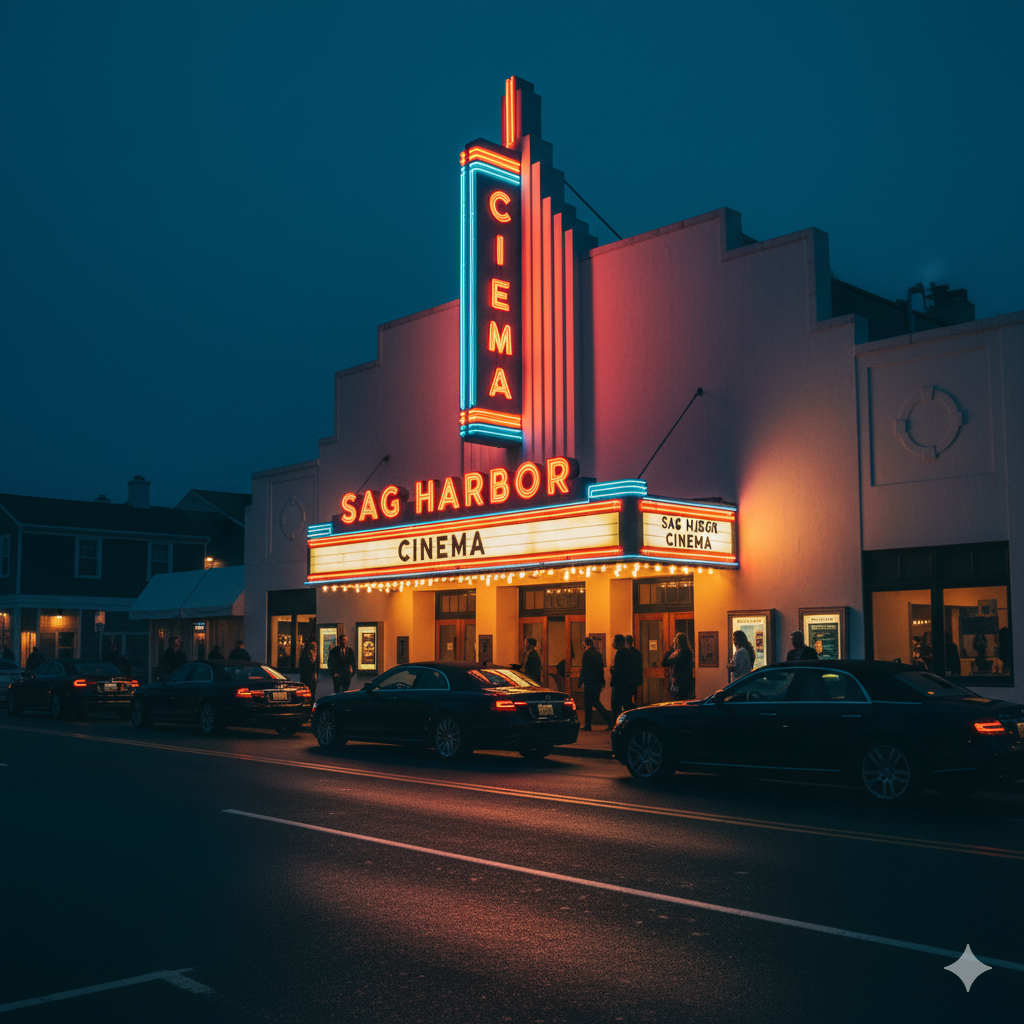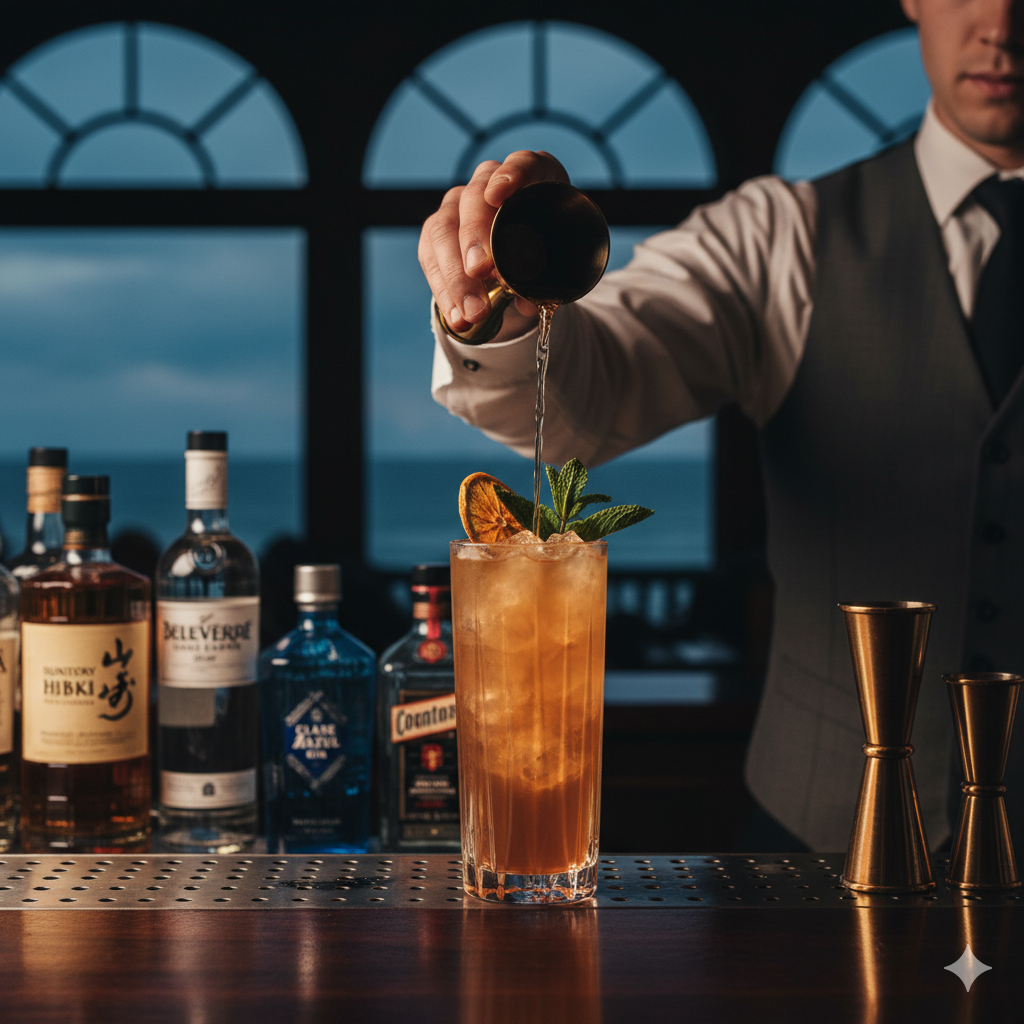Executive Summary: When Dreams Become Nightmares
When experiential marketing goes wrong in the luxury space, the fallout isn’t just embarrassing—it’s financially devastating. Recent industry failures have cost brands millions in revenue while obliterating decades of carefully crafted reputation. Moreover, today’s social media landscape amplifies every misstep into viral infamy. Therefore, understanding these catastrophic failures becomes essential for any luxury brand investing in immersive experiences.
This analysis examines the most destructive experiential marketing disasters across luxury sectors. Additionally, we decode the strategic miscalculations that transformed anticipated triumphs into reputation-destroying scandals. Furthermore, these case studies reveal the precise moments when luxury brands lost control of their narratives entirely.
The Fyre Festival: Blueprint for Experiential Disaster
No discussion of experiential marketing failures is complete without Fyre Festival. Billy McFarland and Ja Rule’s 2017 event promised luxury beyond imagination. Instead, attendees discovered emergency tents, cheese sandwiches, and complete chaos. Subsequently, the brand became synonymous with fraud and failure.
The festival’s marketing campaign generated 300 million impressions within 48 hours through influencer partnerships. However, organizers spent their entire budget on celebrity endorsements while neglecting basic infrastructure. Therefore, the gap between promise and delivery created an irreparable reputation crisis.
Most importantly, Fyre Festival demonstrated how quickly social media transforms marketing failures into global scandals. Attendees documented their outrage in real-time, turning promotional hashtags into symbols of disaster. Thus, the very platforms used to build hype became instruments of destruction.
Fashion Week Fiascos: When Runway Dreams Collapse
Fashion weeks represent the pinnacle of luxury experiential marketing. However, several high-profile disasters have shown how quickly these prestigious events can backfire. For instance, Balenciaga’s nightmarish Spring 2019 campaign featured models contorting into inhuman positions. Consequently, audiences described the visuals as “stuff of nightmares” rather than luxury aspiration.
Similarly, Saint Laurent faced massive backlash for their provocative International Women’s Day campaign. The brand posted a hypersexualized image that critics deemed degrading rather than empowering. Therefore, their attempt at edgy marketing instead triggered accusations of misogyny and poor taste.
These failures highlight how luxury brands often mistake controversy for engagement. Additionally, the assumption that any attention equals good attention proves particularly dangerous in experiential contexts. Furthermore, these missteps create lasting associations between brands and negative emotions.
Digital Platform Disasters: Virtual Worlds, Real Consequences
As luxury brands embrace digital experiential marketing, new failure categories emerge. Notably, several high-end fashion houses have struggled with virtual world activations. Moreover, technical glitches during live-streamed events have created embarrassing moments for prestigious brands.
One luxury watchmaker’s virtual reality experience crashed repeatedly during its launch event. Subsequently, frustrated attendees shared their disappointment across social media platforms. Therefore, what should have been an innovative brand moment became a technology failure story instead.
Additionally, brands underestimate the technical expertise required for successful digital experiences. As discussed in Social Life Magazine’s brand activation analysis, technology must enhance rather than replace authentic human connections. Thus, purely digital approaches often feel hollow to luxury consumers seeking genuine exclusivity.
Celebrity Partnership Catastrophes: When Star Power Backfires
Celebrity collaborations represent major investments in experiential marketing for luxury brands. However, poor celebrity choices have triggered massive reputation disasters. For example, Dolce & Gabbana’s partnership with problematic influencers led to boycotts and canceled events. Subsequently, the brand lost millions in revenue and market credibility.
Furthermore, brands often fail to properly vet celebrity partners’ past behavior and ongoing activities. Therefore, seemingly perfect partnerships can explode unexpectedly when scandals emerge. Additionally, the association between celebrity misconduct and brand values creates lasting reputational damage.
Most critically, luxury consumers expect brands to demonstrate discernment in their partnerships. Hence, poor celebrity choices signal compromised brand judgment and values alignment. Thus, what should enhance prestige instead undermines credibility and consumer trust entirely.
Event Production Meltdowns: When Logistics Destroy Luxury
Even well-intentioned luxury events can fail catastrophically due to production issues. Several high-end fashion shows have collapsed due to inadequate planning and execution. Moreover, these failures become particularly damaging because they occur in front of industry influencers and media.
One luxury car launch event experienced complete audio failure during the CEO’s keynote presentation. Additionally, catering ran out of food within the first hour of a four-hour event. Therefore, guests left with negative impressions despite the product quality being exceptional.
Research shows that operational failures in luxury contexts feel more disappointing than similar issues with mass market brands. Furthermore, luxury consumers have higher expectations for flawless execution and attention to detail. Thus, production mistakes carry amplified reputational consequences.
Cultural Insensitivity Disasters: Global Brands, Local Backlash
International luxury brands frequently stumble when creating experiential marketing campaigns across different cultures. These failures often stem from insufficient cultural research and consultation. Moreover, what seems elegant in one market can appear offensive or inappropriate in another.
Several luxury fashion houses have faced boycotts after culturally insensitive runway shows and marketing campaigns. Gucci’s blackface sweater controversy demonstrates how design choices can trigger immediate and lasting backlash. Subsequently, the brand faced calls for boycotts and significant sales declines in key markets.
Additionally, brands underestimate how quickly cultural missteps spread globally through social media. Therefore, local sensitivity issues become international reputation crises within hours. Furthermore, recovery from cultural insensitivity requires extensive time and authentic commitment to change.
Pricing Strategy Failures: When Exclusivity Becomes Exclusion
Luxury brands walk a delicate line between exclusivity and accessibility in their experiential marketing efforts. However, several recent events have priced themselves into controversy rather than prestige. LVMH’s $10,000 Olympic Games viewing packages sparked outrage for charging family-budget amounts for basic café experiences.
Moreover, these pricing disasters reveal disconnection between luxury brands and contemporary economic realities. Additionally, consumers increasingly scrutinize whether premium experiences justify their extraordinary costs. Therefore, brands must balance exclusivity with perceived value more carefully than ever.
Furthermore, social media amplifies pricing controversies by enabling immediate comparison and criticism. Thus, what brands intend as premium positioning instead appears as corporate greed to many consumers.
Crisis Communication Failures: Making Bad Situations Worse
Poor crisis response often transforms manageable experiential marketing mistakes into reputation disasters. Recent analysis of brand crisis examples shows that delayed or defensive responses consistently worsen outcomes. Additionally, brands that refuse to acknowledge problems face more severe long-term consequences.
Several luxury brands have compounded their experiential failures through inadequate crisis management. For instance, dismissive responses to customer complaints often trigger viral backlash campaigns. Therefore, the communication strategy becomes more damaging than the original failure itself.
Moreover, academic research confirms that effective crisis communication requires immediate acknowledgment, authentic apology, and concrete corrective action. However, many luxury brands prioritize protecting their image over addressing customer concerns honestly.
Technology Integration Disasters: When Innovation Fails
Luxury brands increasingly integrate advanced technology into their experiential marketing campaigns. However, technical failures during high-profile events create particularly embarrassing moments. Moreover, technology malfunctions feel especially problematic for luxury consumers who expect flawless execution.
Several luxury retailers have experienced catastrophic failures during virtual reality product launches. Additionally, augmented reality applications have crashed during fashion week presentations. Therefore, brands must ensure robust technical support for all digital experiences.
Furthermore, luxury consumers often lack patience for technical difficulties that mass market audiences might tolerate. Thus, technology integration requires extensive testing and backup planning to maintain brand prestige during live events.
Supply Chain Scandals: When Ethics Meet Experiences
Modern luxury consumers increasingly care about ethical production and supply chain transparency. Therefore, experiential marketing events that inadvertently highlight problematic practices can trigger massive backlash. Recent investigations revealed that some luxury brands were using illegal workers to produce items costing $57 while selling them for $2,780.
Additionally, brands hosting lavish experiences while their supply chains exploit workers face accusations of hypocrisy. Moreover, social media enables activists to quickly connect luxury marketing with ethical concerns. Therefore, brands must align their experiential messaging with their production practices completely.
Furthermore, sustainability concerns increasingly influence luxury consumer purchasing decisions. Thus, wasteful or environmentally damaging experiential events can trigger boycotts and negative coverage across multiple platforms.
Recovery Strategies: Learning from Luxury Failures
Successful recovery from experiential marketing disasters requires strategic patience and authentic commitment to change. Case studies of successful brand recoveries show that immediate acknowledgment, concrete action, and sustained improvement efforts restore consumer trust. Additionally, brands must demonstrate lasting commitment rather than superficial responses.
Moreover, luxury brands must address both immediate concerns and underlying systemic issues. Therefore, surface-level apologies without operational changes fail to restore credibility. Furthermore, consumers increasingly demand evidence of genuine cultural and process improvements.
For additional insights on creating successful luxury experiences, explore Social Life Magazine’s luxury fashion trends analysis which highlights the importance of authentic brand storytelling.
Prevention Framework: Avoiding Experiential Disasters
Preventing experiential marketing disasters requires comprehensive planning and risk assessment protocols. Additionally, brands must establish clear approval processes for all creative and operational elements. Moreover, cultural consultation becomes essential for global luxury brands operating across diverse markets.
Furthermore, technical rehearsals and backup planning prevent technology-related failures during live events. Therefore, luxury brands must invest in thorough preparation rather than relying on improvisation. Additionally, crisis communication plans should anticipate potential failure scenarios and response strategies.
Most importantly, brands must align their experiential marketing with their core values and operational realities. Thus, authenticity becomes the foundation for sustainable luxury experiential success.
Strategic Mandate: The Future of Luxury Experiential Marketing
The luxury industry must fundamentally reconsider its approach to experiential marketing following these catastrophic failures. Moreover, brands must prioritize substance over spectacle to maintain long-term credibility. Additionally, consumer expectations for authenticity and ethics continue rising across all luxury categories.
Therefore, successful luxury experiential strategies must balance innovation with risk management. Furthermore, brands must invest in cultural competency and operational excellence rather than purely creative elements. Thus, the future belongs to luxury brands that can deliver both inspiring experiences and flawless execution.
Most critically, luxury brands must remember that reputation represents their most valuable asset. Subsequently, every experiential marketing investment should strengthen rather than jeopardize this foundation. Hence, strategic thinking must prevail over short-term attention-seeking tactics.
The stakes have never been higher for luxury experiential marketing. However, brands that learn from these failures while maintaining their commitment to excellence will create the defining experiences of tomorrow.
Ready to Elevate Your Brand Experience?
Don’t let your luxury brand become the next cautionary tale. Contact Social Life Magazine to discuss advertising opportunities and article submissions that showcase your brand’s unique story with sophistication and strategy.
Connect With Luxury Excellence:
- Subscribe to Email Invites & Exclusive Events
- Subscribe to Social Life Magazine Print Edition
- Polo Hamptons 2026 – Tickets, Cabanas & Corporate Sponsorships







